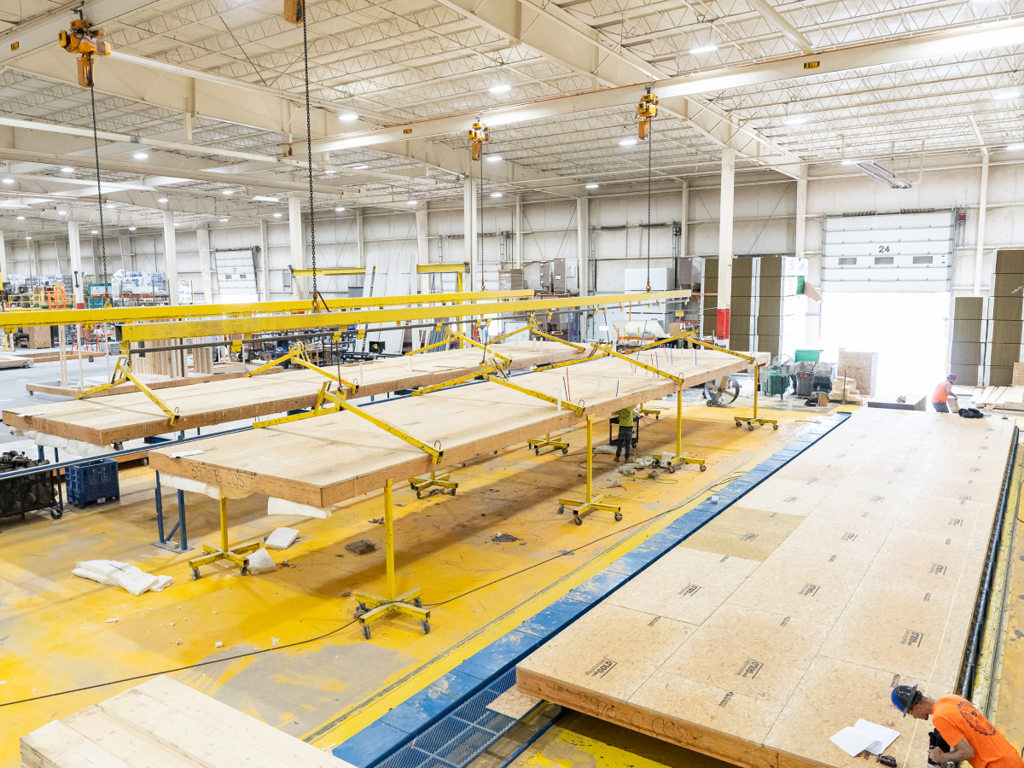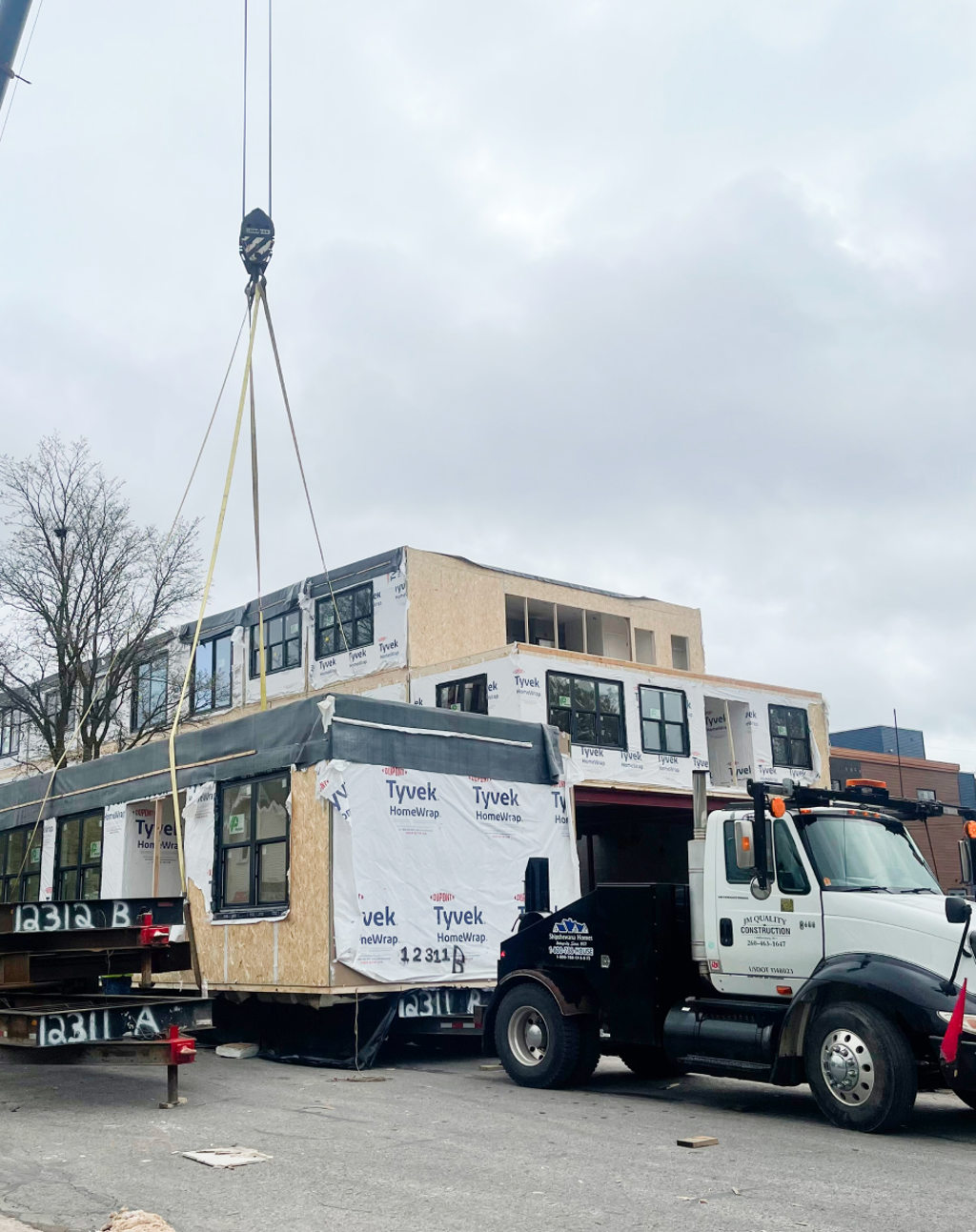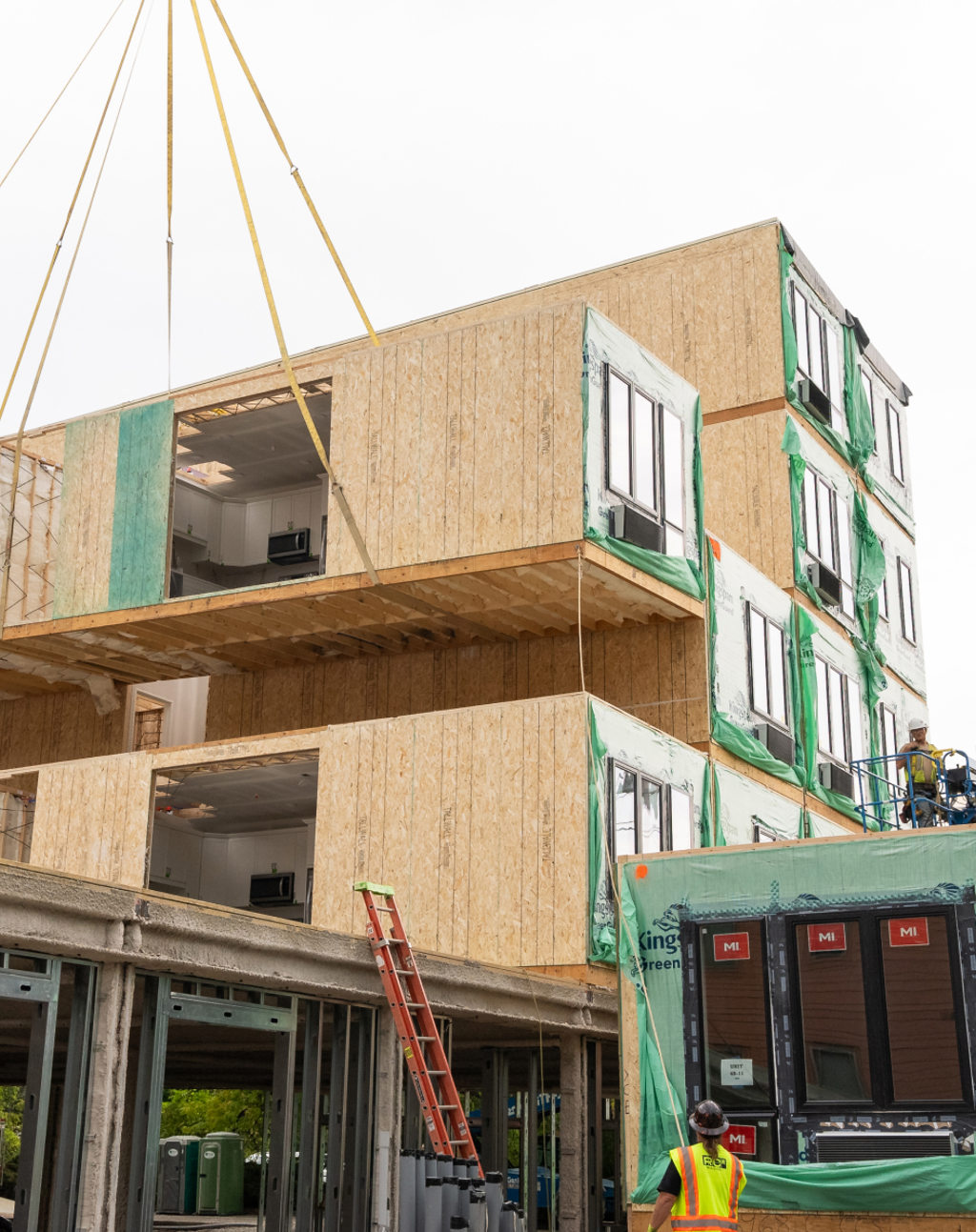Building a Greener Tomorrow: The Environmental Benefits

As we close the book on 2025 and look ahead to the construction landscape of 2026, one trend is clearer than ever: Sustainability is no longer an “optional add-on.” It’s a core demand from investors, municipalities, and tenants alike.
For developers facing strict Environmental, Social, and Governance (ESG) goals, the construction method matters just as much as the materials used. This is where the sustainability and process benefits of modular construction shine. Unlike traditional construction, which tries to retrofit green practices onto a chaotic job site, modular construction is inherently sustainable by design.
Here is how the RC2 process is building a greener future, one module at a time.
The Factory Advantage: Drastic Waste Reduction
The construction industry is notoriously wasteful. On a traditional job site, material cut-offs often end up in a dumpster, exposed to the rain and mud, destined for a landfill.
In the RC2 factory, efficiency is the rule. Our controlled manufacturing environment allows us to optimize material usage to a degree impossible in the field.
- Precision Inventory: We order materials in bulk and to specific lengths, minimizing cut-offs.
- Recycling Systems: Wood scraps, drywall, and cardboard that are generated are clean, dry, and easily sorted for recycling rather than being tossed into a mixed-waste dumpster.
- Material Protection: Because we build indoors, we eliminate material loss from weather damage, theft, or site spoilage.


Tighter Envelopes, Lower Energy Bills
Sustainability extends far beyond the build phase; it lives in the building’s long-term performance. One of the distinct process benefits of modular construction is the ability to build a tighter, more energy-efficient envelope.
Because we build from the inside out in a dry environment, we can seal areas around outlets, windows, and plumbing penetrations that are difficult to access in traditional framing. Furthermore, our lumber is never exposed to rain or snow. This prevents the twisting, warping, and shrinking that often occur in site-built framing, which can create air gaps and thermal leaks over time. The result is a building that requires less energy to heat and cool, reducing its carbon footprint over its lifespan.
Less Site Disturbance, Lower Emissions
A traditional construction site is a hub of heavy traffic, noise, and carbon emissions that can last for years. Modular construction dramatically lightens this load.
By consolidating the workforce at our factory, we reduce the daily convoy of subcontractors driving to the job site. Additionally, because 90% of the construction happens off-site, the number of heavy material deliveries to the project location drops significantly. Fewer trucks idling on city streets means less noise pollution and fewer carbon emissions for the surrounding community.
Efficiency Is Sustainability
Perhaps the most overlooked environmental benefit is time. When RC2 accelerates a project schedule by 30% to 50%, we're reducing the total energy consumed by the construction process itself. That means fewer months of running site generators, heating job trailers, and powering temporary lights.
Build On a Sustainable Vision for 2026
As you plan your portfolio for 2026, consider the impact of your construction method. With RC2, you don't have to choose between speed, quality, and sustainability. The process delivers all three.
Let’s make next year your most efficient—and environmentally responsible — year yet. Contact us today to discuss how we can help you Build On a greener tomorrow.
